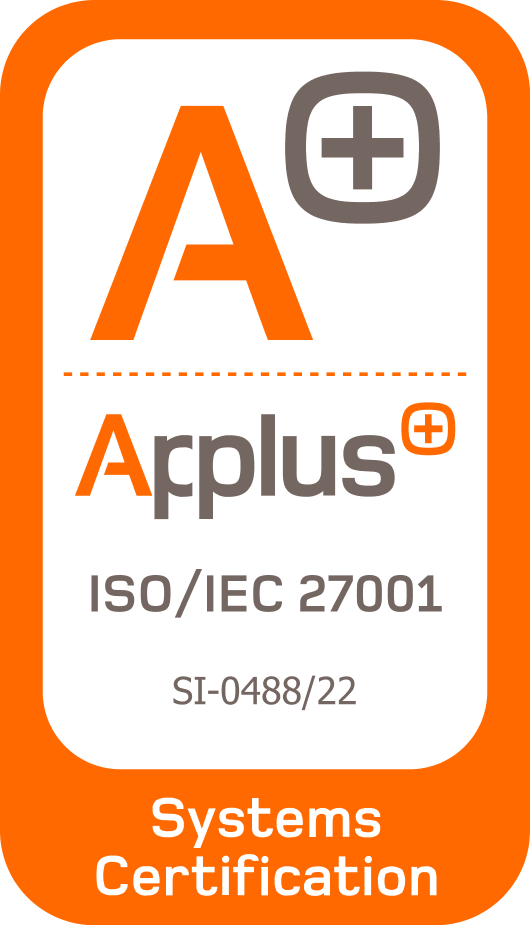The term ISO 50001 may not tell you anything in itself, but it can actually mean a lot to your business and your energy management. It establishes energy management requirements with guidance for use, but what does this imply? Keep reading to understand basic facts about ISO 50001 certification.
The ISO 50001 was first published in 2011 and has since spread worldwide. Why? To harmonise the requirements for a clear, documented continuous process to reduce energy consumption in organisations.
This article includes the basic facts about ISO 50001. We will cover topics such as its purpose, its target users, its components, among others. Let’s start with what an Energy Management System is. If you want more detail, you can see this other article about how software can help you achieve your ISO 50001 certification.
What is an Energy Management System?
An EMS (Energy Management System) is a tool used by a company that seeks to improve its energy performance. To achieve this, the system engages employees across the organisation to use the recollected data and cooperate in the process. An Energy Management System improves operational efficiencies, decreases energy consumption and diminishes environmental impacts.
What is ISO 50001’s Aim?
Now, why does ISO 50001 establish energy management requirements with guidance for use?
First of all, the standard attempts to achieve three main outcomes that are interrelated:
- ISO 50001 aims for a reduction of companies’ CO2 emissions by giving companies a framework on how to succeed with an EMS
- By guiding a company’s EMS, ISO 50001 enables more efficient use of its energy sources.
- Resulting from this efficiency gain, businesses achieve cost savings and enhance their reputation.
Companies accomplish a continuous improvement of their energy performance with ISO 50001’s exhaustive approach.
How does ISO 50001 Work?
The ISO 50001 standard specifies the requirements for establishing, implementing, maintaining, and improving an EMS. It helps organizations internalize the policies by involving employees across the organisation.
Based on the PDCA structure (Plan, Do, Check and Act), it can be integrated with ISO 9001 and ISO 14001 if they are already put in place. The PDCA is the structure ISO uses to achieve continual improvement in its management systems.
What does Conformity to the Standard do to a Corporation’s Image?
Conformity to ISO 50001 highlights best practices carried out by the company such as:
- That it has implemented a sustainable energy management system.
- Additionally, it has established a baseline of its energy use.
- Last but not least, the firm commits to continual improvement of its energy performance.
In many countries, the need for more green and sustainable companies has triggered ISO 50001’s appeal. A reason its demand has risen is due, in part, to the requirement of many clients and suppliers for the certification to work with them. This can be in the case of public tenders, but also large organisations who require the certification to their vendors.
Who is it Addressed to and How can they Benefit from ISO 50001?
Any organisation no matter its size, sector or geographical location can benefit from getting ISO 50001, in particular:
- Firms looking to reduce the amount of energy they consume to reduce their costs
- Businesses that want to diminish the impact of energy’s rising costs
- For those companies that strive to meet legislative or self-imposed carbon limits
- Entities that want to reduce their reliance on fossil fuels
- Companies that dedicate efforts to make a positive contribution to the environment and want to set an example
- Or why not? All the above.
What are its main components?
What you get when you decide to acquire this standard are the following guidelines:
- Energy policy
- Energy action plan
- General requirements
- Management responsibility
- Implementation and operation
- Performance audits
- Management review
ISO 50001 does not establish any specific quantitative targets for organisations. Companies are the ones that set their own targets, create action plans and reach their target.
What are the implications to succeed in its implementation?
For a successful implementation of ISO 50001, a commitment from all levels of the organisation must exist: top management being the most crucial player for its decision over the project being carried out or not. The management board must decide and approve the energy policies and their associated action plan. This would be the starting point and keystone of the entire process.
Some Statistics on ISO 50001’s deployment
According to the DIN – the German Institute for Standardization (Deutsches Institut für Normung), each year more companies are acquiring ISO 50001. Data from the institute shows that in May 2014 there were 7346 sites certified with ISO 50001.
From a CTI’s (Italian Termotechnical Committee) report performed by October 2013, around 85% of the sites certified with this standard are located in Europe (which means 6.250 – 6.300 certified organizations). The countries with the most certified sites are Germany, France, The Netherlands, and The United Kingdom. Germany has been leading the trend worldwide, only recently overtaken by China. And followed closely by Spain.
Another interesting fact is the ranking of certifying bodies with a higher rate of certified sites. The top 5 certifying bodies by the number of sites are TÜV Rheinland in the first place, followed by AFNOR, DQS, BSI, and TÜV Nord.
Where to find an accredited certification body?
Now that you know more about ISO 50001 you might consider it suitable for your company. Getting started is just a click away. Visit the International Accreditation Forum or contact the national accreditation body in your country. They will guide you through the process.
ISO created this standard in response to the UNIDO’s (United Nations Industrial Development Organization) petition. The UNIDO recognized the importance of coming up with a global response to climate change and decided to take action. The result was an ISO 50001, a voluntary international standard. This certificate aims to entice organizations into becoming more eco-friendly while reaping the benefits. This is some basic information with which you can have a clear idea of what ISO 50001 aims for. We hope this introduction to ISO 50001 has been useful.



